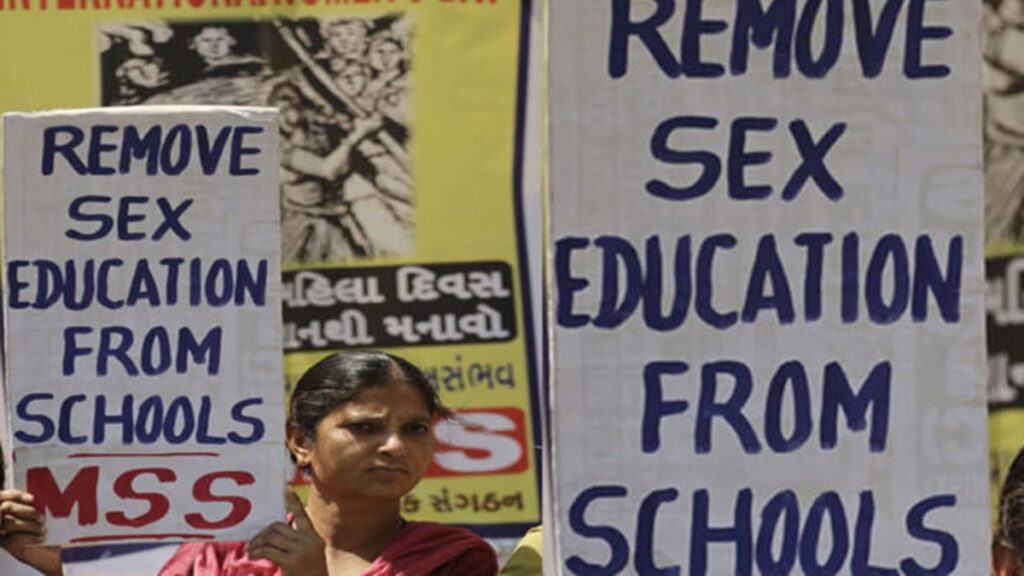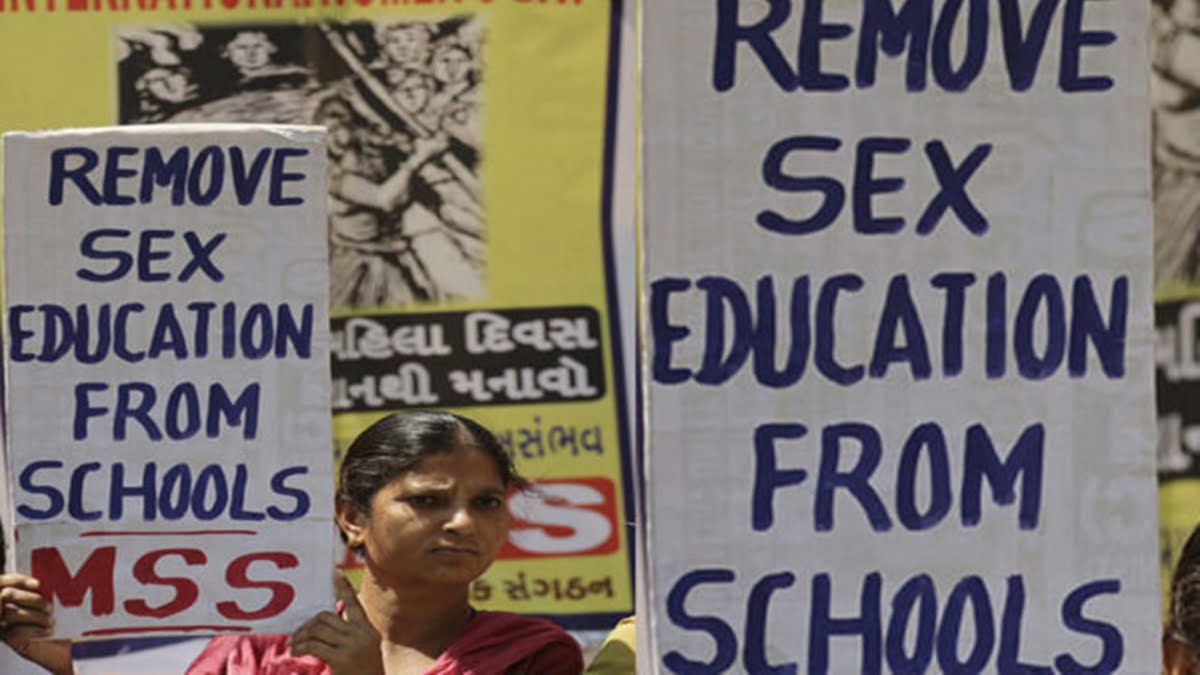
Earlier in 2023, as a part of a larger project on youth Sexual and Reproductive Health and Rights (SRHR), I had the opportunity to interact with fifteen obstetricians and gynaecologists practising in the government and private healthcare sectors across several Indian states. A major part of our conversations revolved around the importance of Comprehensive Sexuality Education (CSE) for improving young people’s health-seeking behaviour, the inadequacy of the CSE curriculum in the country, and the challenges faced by doctors and other educators while trying to impart such education.
A few doctors discussed how parents and community members often pose the greatest barrier to the successful implementation of sex education programmes, wrongly believing that they encourage promiscuity and reckless sexual behaviour among young people. Responding to this threat of a major backlash from society at large, educational institutions and even healthcare centres are often reluctant to engage with sex education in any meaningful manner, choosing instead to present clinical facts shrouded in a language of fear, prohibition, or shame – an exercise that, instead of generating any real awareness among young people about their bodies, safe sexual practices, and avenues of seeking sexual and reproductive healthcare, merely reproduces the stigma around sex and reaffirms the taboo surrounding it.
This leads us to an important realization, that CSE for young people cannot be for young people alone. Discussions around sex and sexuality that exclude parents, family members, or other members of the community run the risk of estranging young people from their micro-social worlds, shrinking spaces of conversations within families, and preventing any real change. In a country like ours, where sexual and reproductive choices and decisions are not made by individuals but often by families and communities, such education serves no actual purpose. It is thus crucial that CSE programmes confront the onerous task of creating inclusive spaces of discussions around sex and sexuality that span across generations, instead of becoming a tokenistic exercise in relaying some basic scientific facts to young people in isolation.
While designing CSE programmes, it is also important to remember that our needs do not emerge in a vacuum but are structured by our socio-historical circumstances and lived environments. Not every young person has the same needs, nor do they experience these needs in the same way. Because of this, it is not desirable to take a one-size-fits-all approach when it comes to sexuality education – rather, CSE programmes must be based on a thorough understanding of particular socio-cultural contexts and must be adapted to specific social realities in order to become relevant or useful. It is essential, therefore, that community members themselves are actively involved in every step of the process of formulating or implementing such programmes. Unfortunately, when operating under time and resource-based constraints, this becomes inordinately difficult.
In the Global South, where conversations around sex are generally viewed with suspicion and associated with shame, trust becomes a key element in sexuality education. CSE must be a gradual, step-by-step, long-term process, where care is taken to first build a space of mutual trust and respect before any discussions on sex or sexuality are initiated. For this reason, as well, it is important that CSE for the members of a particular community becomes a collaborative effort between community members themselves and ‘professional outsiders’, and that such information which is often labelled as ‘sensitive’, comes from an agent who people can trust.
It is an oft-overlooked fact that the language in which CSE is imparted can determine its chances of success or failure. It is not enough to merely move away from a clinical, prohibitive, or prescriptive stance to a more pleasure-affirming language when engaging with sex; the vocabulary employed is also pivotal in deciding whether a CSE programme would be effectual in the long run. An abstract vocabulary of ‘rights’, ‘needs’ and ‘choices’ might have little or no relevance to people in certain contexts, and might not be appropriate in others. What is more, such a language may become alienating, widening the chasm between those disseminating the information and those receiving it, or preventing people from being able to articulate their concerns or demands in a way that they deem fit. When it comes to CSE, it is not enough to be mindful of what we present, but also how we present it.
If CSE continues to be seen as something over and above the ‘normal’, to be delivered or attended because the regulations demand it, it shall fail to have any considerable impact on young people’s everyday lives. In this regard, one of the doctors that I spoke to discussed how CSE needs to step out of the confines of classrooms, healthcare centres or sex education camps, and move to more informal spaces where young people gather, such as cafes or bookstores. Changing the settings to less structured, more comfortable ones, and making the process more conversational would ensure that young people’s opinions on and experiences with sex and sexuality are heard and given importance. It is one of the pressing needs of our times that CSE ceases to be a one-way dissemination of information involving a series of dos and don’ts and instead evolves into a dynamic exercise involving dialogue, debates, and meaningful exchange.
Lastly, the people entrusted with the responsibility of imparting sex education or providing sexual and reproductive health services must be adequately informed. It is common knowledge that the judgmental attitudes of healthcare staff often dissuade young people from seeking sexual and reproductive healthcare. Currently, there are no holistic CSE programs put in place for doctors and other healthcare personnel or chemists and pharmacists, either by the government or by independent hospital administrations – no gender sensitivity training or exposure to contemporary conversations/ debates on gender and sexuality – to aid them in shedding their prejudices, thereby making healthcare more inclusive. In certain places, tokenistic training programmes on respectful service delivery are instituted, which do nothing to permeate the multiple layers of prejudices and biases that healthcare workers embody. It is the same with teachers and counsellors employed to impart CSE – often, the very agents responsible for providing essential (and potentially life-saving) information end up spreading the most misinformation, perpetuating the vicious cycle of fear, embarrassment and confusion related to all things sexual.
Sexuality education in India cannot be divorced from the material and cultural conditions within which sex and sexuality are understood, practised and experienced by people; rather, CSE programmes must be responsive to and developed in accordance with the economic, cultural, and social frameworks of particular societies. Most importantly, sex education programmes cannot stop at disseminating information; CSE must become a continuous process, where the impact of changes effected by these programmes are studied and assessed through regular follow-up exercises, and the programmes are modified accordingly, to ensure maximum impact.
***
Madhubanti Talukdar holds a postgraduate degree in Sociology from South Asian University (SAU), New Delhi. Having worked across a diverse range of projects in the past three and a half years, her research interests include Feminism and Gender Justice, Sexual and Reproductive Health and Rights, Labour and Migration, Memory and Oral History, and Sociology of Religion.

[…] choices are community-driven, comprehensive sexuality education programmes must strive to foster inclusive intergenerational dialogue, rather than merely conveying scientific facts in […]